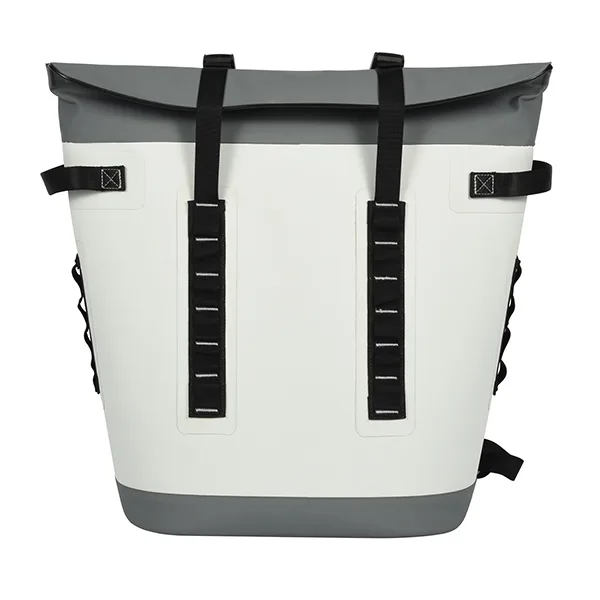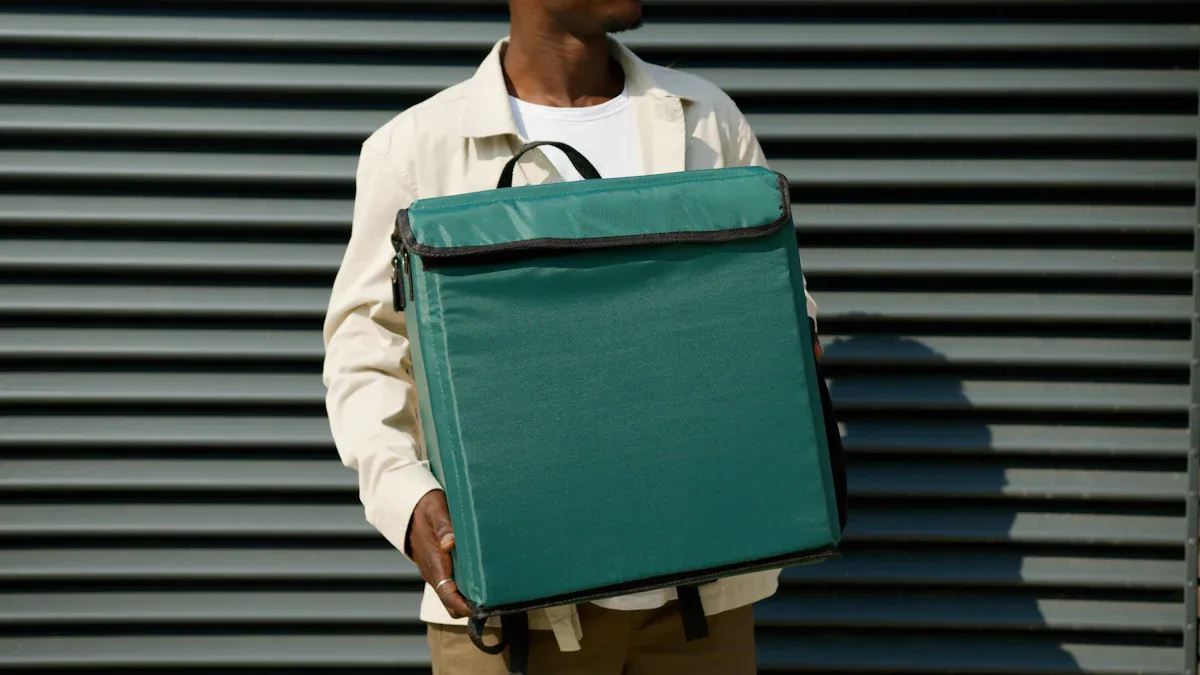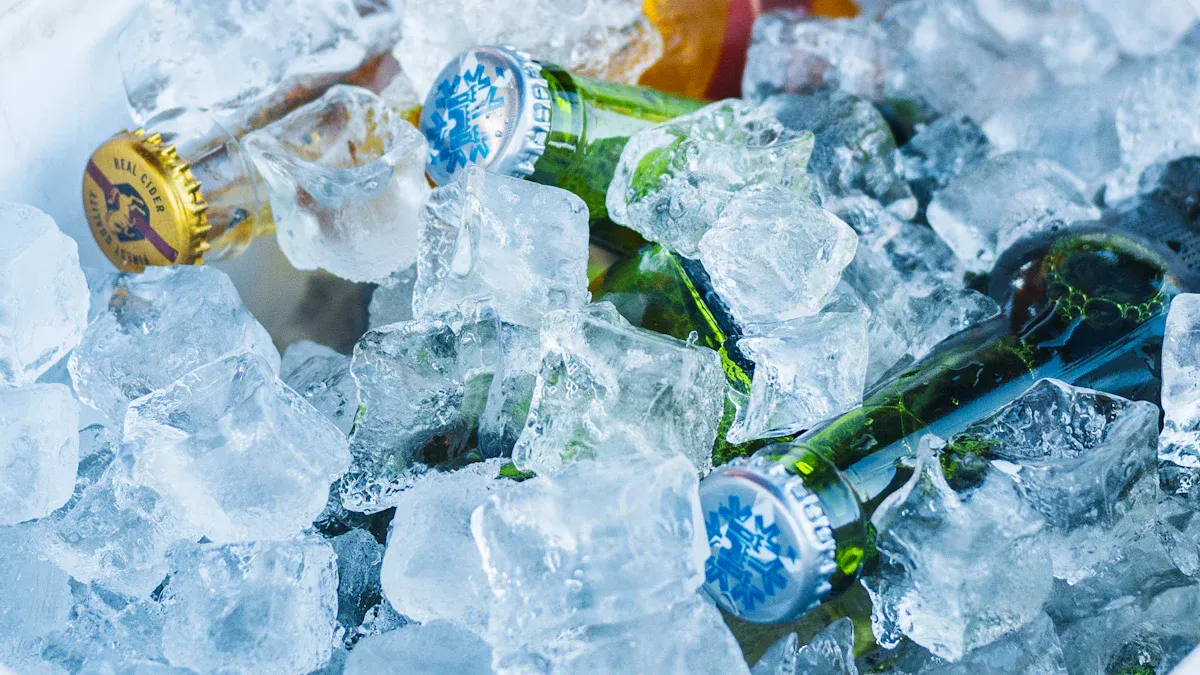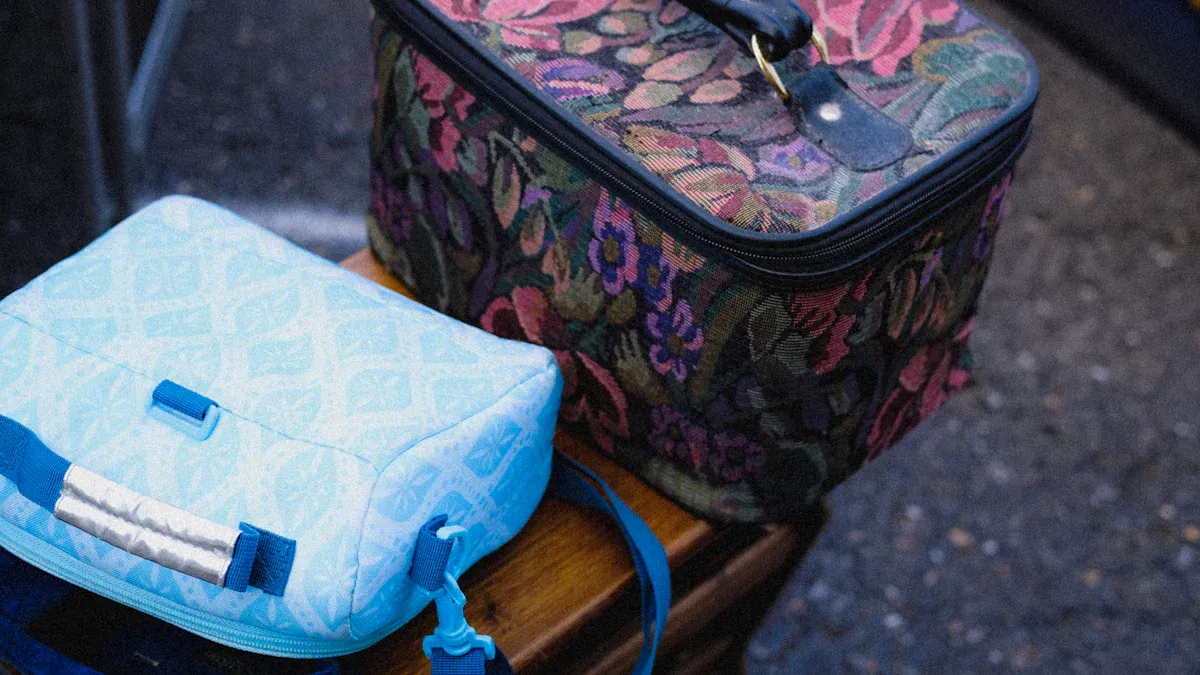

Picking the right icebox cooler bag can make or break your outdoor adventures. Imagine packing your favorite snacks and drinks only to find them lukewarm halfway through the day. That’s where ice packs come in! They keep your cooler lunch bag icy cold and your food fresh for hours. With the cooler box market expected to grow from $7.27 billion in 2024 to $8.11 billion in 2025, it’s clear that more people are prioritizing high-quality cooling solutions. So, how do you choose the best ice packs? Think about their size, durability, and how long they stay cold. These small details ensure you get the most out of your investment.
Kuer, one of the leading cooler box manufacturers will provide you with a variety of cooler solutions.
Key Considerations for Choosing the Right Ice Pack
Size and Capacity
When choosing the right ice pack, size matters. You want ice packs that fit snugly into your cooler without wasting space. Think about how much food and drinks you plan to store. For a small picnic, compact ice packs work perfectly. For longer trips, larger packs or multiple smaller ones might be better. The goal is to maximize cooling while leaving enough room for your items.
Pro tip: Measure your cooler before buying ice packs. This ensures you pick the right size and avoid awkward gaps that reduce cooling efficiency.
Material and Durability
Durability is key when it comes to ice packs. You don’t want them leaking or breaking after a few uses. High-quality materials like polyethylene and nylon are popular for their strength and resistance to wear and tear. Some brands even offer reinforced designs for extra durability.
Here’s a quick comparison of cooling durations and freeze temperatures for popular ice packs:
| Ice Pack | Cooling Duration | Freeze Temperature |
|---|---|---|
| Engel Ice | 24-36 Hours | 20° |
| Cooler Shock | 18-26 Hours | 18° |
| Yeti Ice | 12+ Hours | 28° |
| TechniIce | 12+ Hours | 0° |
| ArcticIce | 12 Hours | 28° |
Choose materials that align with your needs. If you’re planning a long trip, opt for ice packs with extended cooling durations.
Cooling Efficiency
Cooling efficiency is the heart of any ice pack. You want packs that stay cold for hours and maintain a consistent temperature. Gel-based ice packs are known for their excellent cooling performance, while hard-shell packs provide a layer of insulation that keeps temperatures stable.
To boost efficiency, pair your ice packs with a cooler that has a thick layer of insulation. This combination ensures your food and drinks stay fresh longer.
Cost and Budget
Ice packs come in a wide range of prices, so it’s important to find one that fits your budget. While cheaper options might save you money upfront, they often lack durability and cooling efficiency. Investing in high-quality ice packs can save you money in the long run.
Here’s a quick cost comparison:
| Brand | Price | Features |
|---|---|---|
| Aldi Cooler Bag | $9.99 | Better insulation, additional features |
| Trader Joe’s Bag | $7.99 | Larger size, fewer features |
If you’re on a tight budget, look for brands that offer a balance between price and performance.
Environmental Impact
The materials used in ice packs can have a significant impact on the environment. Styrofoam coolers, for example, are lightweight and effective insulators, but they’re non-biodegradable. They contribute to pollution and take hundreds of years to decompose. Worse, they break down into microplastics that harm marine life and enter the food chain.
To reduce your environmental footprint, consider eco-friendly alternatives like reusable gel packs or biodegradable cold packs. These options not only keep your cooler icy cold but also help protect the planet.
Types of Cooler Ice Bags and Their Benefits
When it comes to keeping your cooler icy cold, not all ice packs are created equal. Let’s explore the different types of ice packs and how they can make your outdoor adventures more enjoyable.
Gel-Based Ice Packs
Gel packs are a favorite for many outdoor enthusiasts. They’re lightweight, flexible, and easy to fit into tight spaces. These packs contain a viscous gel that freezes at lower temperatures, keeping your items cold for hours. For example, Polar Tech Ice Brix can last up to 24 hours, making them perfect for long trips. You’ll love how gel packs mold around your food and drinks, maximizing cooling efficiency.
Hard-Shell Ice Packs
If durability is your priority, hard-shell ice packs are the way to go. These packs, like Yeti Ice, feature a tough plastic exterior that resists breaking. They freeze quickly and stay cold for extended periods. Plus, their solid structure makes them easy to stack in your cooler. Whether you’re camping or tailgating, hard-shell packs are a reliable choice.
Dry Ice Packs
Dry ice packs are a game-changer for those who need ultra-cold temperatures. They use phase change materials to maintain freezing conditions for days. Arctic Ice Tundra, for instance, is designed for extended cooling and offers excellent surface area coverage. These packs are ideal for transporting frozen goods or keeping your cooler cold during multi-day trips.
Flexible Ice Sheets
Ice blankets, also known as flexible ice sheets, are incredibly versatile. They’re thin, foldable, and can be cut to fit any cooler size. These sheets are great for wrapping around delicate items like fruits or bottles. Their flexibility ensures even cooling throughout your cooler. If you’re looking for convenience and adaptability, ice blankets are a must-have.
Disposable Ice Bags
Disposable ice bags are a quick and easy solution for short-term cooling needs. They’re pre-filled with water or gel and can be tossed after use. While they’re not the most eco-friendly option, they’re handy for one-time events like picnics or parties. Keep a few on hand for emergencies or last-minute plans.
Each of these types of ice packs offers unique benefits. Whether you need long-lasting cold packs or flexible gel packs, there’s an option to suit your needs.
Tips for Packing a Cooler with Ice Packs
Packing a cooler with ice packs might seem straightforward, but doing it right can make a huge difference in how long your food and drinks stay cold. Let’s dive into some practical tips to help you get the most out of your cooler and ice packs.
Pre-Chilling Your Cooler
Before you even think about using ice packs, you need to pre-chill the cooler. A warm cooler can melt your ice packs faster, reducing their effectiveness. To avoid this, place a bag of ice or frozen cold packs inside the cooler a few hours before packing it. This step lowers the cooler’s internal temperature, giving your ice packs a head start.
If you’re short on time, try using frozen water bottles or even frozen vegetables as a quick fix. Once the cooler feels cold to the touch, you’re ready to pack it. Remember, a pre-chilled cooler keeps your items colder for much longer.
Pro Tip: Always pre-chill the cooler overnight if you’re planning a long trip. This small step can save you from having to replace ice or ice packs halfway through your adventure.
Strategic Placement of Ice Packs
The way you arrange your ice packs inside the cooler matters more than you think. Start by placing a layer of ice packs at the bottom of the cooler. This creates a cold base for your items. Next, add your heaviest and most perishable items, like meat or dairy, directly on top of the ice packs.
For even cooling, add another layer of ice packs between your items. Finally, place a few ice packs on top to trap the cold air inside. Cold air sinks, so this top layer helps maintain a consistent temperature throughout the cooler.
Quick Tip: Use flexible cold packs to fill gaps between items. This prevents warm air pockets and ensures everything stays evenly chilled.
Maintaining Optimal Cooling Ratios
Getting the right balance between ice packs and your items is crucial for effective cooling. A good rule of thumb is to use a 2:1 ratio of ice packs to food and drinks. This means for every two parts of ice packs, you should have one part of items.
If you’re packing a cooler for a short trip, you can get away with fewer ice packs. But for longer adventures, stick to the 2:1 ratio to keep everything cold. Also, avoid overpacking the cooler. Too many items can block airflow and reduce the efficiency of your ice packs.
Did You Know? Using ice packs instead of loose ice reduces mess and keeps your cooler dry. Plus, ice packs are reusable, making them a more sustainable choice.
Cleaning and Storing Ice Packs
After your trip, don’t forget to clean and store your ice packs properly. Rinse them with warm, soapy water to remove any dirt or residue. For gel-based or hard-shell ice packs, check for cracks or leaks before storing them. Damaged ice packs should be replaced to avoid spills in your cooler.
Once clean, dry the ice packs thoroughly and store them in your freezer. Keeping them frozen ensures they’re ready to go for your next adventure. If you’re using disposable ice packs, make sure to dispose of them responsibly to minimize environmental impact.
Pro Tip: Label your ice packs with the date of purchase. This helps you track their lifespan and replace them when needed.
By following these tips, you’ll master the art of packing a cooler with ice packs. Whether you’re heading out for a picnic or a weekend camping trip, these strategies will keep your food and drinks perfectly chilled.
Innovations in Cold Packs for 2025

Smart Ice Packs with Advanced Features
Imagine an ice pack that tells you when it’s time to refreeze it. That’s the future of cooling! Smart ice packs are making waves in 2025 with features like temperature sensors and Bluetooth connectivity. These packs can monitor their cooling levels and send alerts to your phone when they’re running low. Some even come with built-in timers to help you track how long your cooler will stay cold. These innovations make outdoor adventures more convenient and stress-free.
Fun Fact: Some smart ice packs can adjust their cooling intensity based on the type of food or drink they’re keeping cold.
Eco-Friendly and Sustainable Options
If you care about the planet, you’ll love the eco-friendly options available now. Many companies are creating reusable ice packs with biodegradable materials. These packs reduce plastic waste and align with sustainability goals. Cooler bags are also becoming more eco-conscious, offering reusable and insulated designs that cut down on single-use waste. By choosing these options, you’re not just keeping your cooler cold—you’re also helping the environment.
- Reusable ice packs are economical and eco-friendly.
- Biodegradable materials are reducing plastic waste.
- Insulated cooler bags maintain quality while being sustainable.
Enhanced Cooling Technologies
New materials are making ice packs more efficient than ever. Advanced gels and phase-change materials can hold cold temperatures longer, keeping your cooler icy for days. These technologies are perfect for long trips or transporting frozen goods. Plus, they’re more durable, so you won’t have to worry about leaks or breaks.
Compact and Lightweight Designs
Nobody wants to lug around heavy ice packs. That’s why compact and lightweight designs are trending. Flexible ice sheets and slim gel packs fit easily into any cooler without taking up too much space. They’re perfect for picnics, road trips, or even lunchboxes. These designs make it easier than ever to keep your food and drinks cold without the bulk.
Pro Tip: Look for ice packs that combine lightweight materials with high cooling efficiency for the best of both worlds.
Choosing the right cooler ice bag can transform your outdoor experiences. By understanding the types and innovations, you’ll keep your food fresh and drinks cold longer. With so many options available, making an informed choice ensures you get the best value. Ready to upgrade your cooler ice bag for 2025? Start exploring today!
FAQ
How many ice packs should I use in my cooler?
Use a 2:1 ratio of ice packs to food and drinks. This keeps everything cold and prevents warm air pockets.
Can I use regular ice instead of ice packs?
You can, but ice packs are cleaner, reusable, and last longer. They also keep your cooler dry and reduce mess.
Are eco-friendly ice packs as effective as regular ones?
Yes! Eco-friendly ice packs offer excellent cooling performance while reducing environmental impact. They’re a smart choice for sustainable outdoor adventures.




